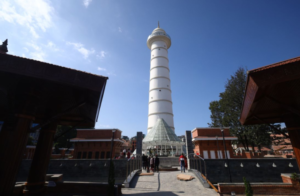Dearth of environmental justice: Horror for people living around Sisdol landfill site

Agency: The environmental problems facing our planet worsen with each passing day, leading to profound and often irreversible damage to ecosystems and communities. One pressing question arises: Will the situation improve with only minimal effort from government authorities? Moreover, can the tree plantation programmes initiated by non-governmental organisations (NGOs) in Nepal bring about substantial and lasting change?
Regrettably, the answer to these questions is a resounding no. Current initiatives lack the necessary scale and support from the government, which means they are unlikely to have the desired impact on reversing environmental degradation. If the pace of these efforts continues as it stands, we can expect the situation to deteriorate further, leading to even greater challenges for future generations.
As David Naguib Pellow rightfully mentions in “What is Critical Environment Justice?”,the harm suffered by the ecosystem is closely linked to the harm experienced by the most marginalised communities across the planet. These people often experience exclusion and discrimination due to imbalances of power and are often disproportionally affected by environmental hazards and injustices. These injustices are often linked to individuals’ socioeconomic status, as they frequently experience low socioeconomic conditions and have limited access to resources.In the early 1980s, the Environmental Justice Movement began in North Carolina, USA, in response to a local dispute over the dumping of toxic waste near a neighbourhood predominantly inhabited by African American residents.
As citizens of Nepal, every individual is entitled to live in a just and equitable environment. Unfortunately, this idea has not been realised by the many families living near the Sisdol landfill site. These residents face serious challenges, including hazardous living conditions, insufficient access to clean water and health risks associated with toxic waste. Their problems extend beyond health issues, resulting in significant socio-cultural challenges as well. The ongoing neglect of their plight highlights the urgent need for systemic reform and justice, ensuring that every citizen can enjoy the fundamental rights to safety and dignity in their living environment.
Since its inception in 2005, the Sisdol landfill has faced numerous challenges, yet the government has persistently ignored the difficulties experienced by residents in their everyday lives and survival. Initially, the landfill was meant to operate under a temporary contract for only three years. However, despite many complaints from the community, it continues to operate long past that timeframe. People claim that the odour hits you before you even see the site. By 2022, it was estimated that over 75 per cent of the waste was directed to the Sisdol landfill, with more than 200 trucks visiting daily.







